Legendary Ynglings: Descendants Of The Norse Gods And Oldest Scandinavian King Dynasty
Ellen Lloyd - AncientPages.com - Norse legends tell the legendary Ynglings were descendants of the Norse gods and the oldest known Scandinavian King dynasty. In ancient times, they ruled as mighty kings in Sweden and Norway.
 The Yngling Ingjald slaying his kinsmen. Image credit: Hugo Hamilton (1802–1871). Teckningar ur Skandinaviens Äldre Historia. Stockholm: Gjöthström & Magnusson. (Digitalized by Martling Bok & Grafik.)
The Yngling Ingjald slaying his kinsmen. Image credit: Hugo Hamilton (1802–1871). Teckningar ur Skandinaviens Äldre Historia. Stockholm: Gjöthström & Magnusson. (Digitalized by Martling Bok & Grafik.)
Did these people really exist? Historians are divided on this subject. Norwegians consider the Ynglings real historical figures, but in Sweden, the Ynglings have remained mythological. Their existence is still a subject shrouded in mystery.
It isn't easy to understand the Yngling King Dynasty because these people are only mentioned in a few old sources, and very little information could shed more light on their history.
Ynglinga Saga And The Arrival Of The Norse Gods In Scandinavia
In the Ynglinga Saga, Snorri Sturluson (1179 – 1241), a famous Icelandic historian, describes the arrival of the Norse gods to Scandinavia and how Freyr founded the Swedish Yngling dynasty at Gamla Uppsala, one of the most important, sacred ancient Viking and Pagan sites in Sweden.
The saga related the line of Swedish kings until Ingjald (Ingjald illråde), after which the descendants settled in Norway and became the ancestors of the Norwegian King Harald Fairhair.
 Yngve-Frej, the father of the Ynglings. Image credit: Skandinaviens Äldre Historia. Stockholm: Gjöthström & Magnusson
Yngve-Frej, the father of the Ynglings. Image credit: Skandinaviens Äldre Historia. Stockholm: Gjöthström & Magnusson
Harald Fairhair reigned from c. 872 to 930 and is today recognized as the first King of Norway.
The Ynglings were later followed by the House of Munsö, a Swedish dynasty whose first ruler was the legendary and famous Viking Bjorn (Björn) Ironside.
The Ynglings are also mentioned in Saxo Germanicus, Beowulf, referred to as Scyling. Ynglings claimed descent from the god Freyr. They supposedly subdued most of Sweden between 500 and 700 AD.
In his saga, Sturluson writes that they may have been descended from a man called Skelfir, thus, were more appropriately called Skalfings.
One page from the Heimskringla tells the story of the Ynglings.
Christian Icelanders wrote down the stories trying to explain this by saying the Norse gods were ordinary people who became worshiped as gods after their death. Few subscribe to this theory today.
Were The Ynglings Descendants Of The Vanir Gods?
In our article about Asgard – The Ancient Powerful Kingdom Of The Norse Gods, we briefly discussed the relationship between two main groups of Norse gods.
In Old Norse Mythology, the Aesir are the principal gods of the pantheon.
For some time, another tribe of gods, the Vanir, shared this place with the Aesir. However, these two groups of gods fought a long and bloody war, ultimately leading to only a few of the Vanir living in Asgard.
There is little information about this ancient war, but we are told that the Vanir were fertility deities ruling over land and sea, and the Aesir were associated with war, magic, and the sky. The differences between these two groups must have led to disputes and battles.
In the book Iron Age Myth and Materiality: An Archaeology of Scandinavia AD 400-1000, Lotte Hedeager, Professor of Archaeology and Head of the Department of Archaeology, Conservation, and History at the University of Oslo, Norway, explains that the royal Yngling dynasty descended from the Vanir gods.
Tacitus (born 56 AD—died c. 120 AD), a Roman senator and historian, described a Germanic tribe of the Ingaevones who, according to old traditions, descended from a son of Mannus ('man). He was the one who gave them the name. According to Professor Hedeager, myths about Germanic peoples' sacred descent are recorded from the time of Tacitus to the High Middle Ages.
The problem with the Age of Migration or the Dark Ages is very few primary sources exist for the tribes who were migrating around Europe, and it's difficult to trace these ancient people's routes and settlements.
Can Archaeology Confirm The Existence Of The Ynglings?
Certain archaeological excavations at Gamla Uppsala provide little evidence of the Ynglings.
While excavating the Royal Mounds at this ancient sacred site, scientists discovered human remains that, according to Swedish archaeologist Birger Nerman, were the bones belonging to Aun, Egil och Adils, three men who were Ynglings. Other mounds at the sire were also believed to contain remains of the Ynglings Royal Dynasty.
 Royal mounds at Gamla Uppsala, Sweden. Image credit: Henri Osti
Royal mounds at Gamla Uppsala, Sweden. Image credit: Henri Osti
However, it must be stated that these ancient human remains have not been adequately investigated, and scientists have not officially confirmed Ynglings were buried at Gamla Uppsala.
The legendary Ynglings remain a fascinating subject, and stories about these people are a mixture of myths, legends, and historical facts.
Written by Ellen Lloyd – AncientPages.com
Updated on November 15, 2023
Copyright © AncientPages.com All rights reserved. This material may not be published, broadcast, rewritten or redistributed in whole or part without the express written permission of AncientPages.com
Expand for referencesSnorri Sturlason, Heimskringla or The Chrinicleof the Kings of Norway
Swedish books and magazines
Lotte Hedeager - Iron Age Myth and Materiality: An Archaeology of Scandinavia AD 400-1000
Johan Lindström - Sveriges Långa Historia
More From Ancient Pages
-
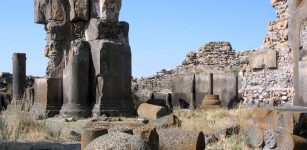 Ancient Great City Of Ani: Lost Capital Of The Kingdom Of Armenia And Its Mysterious Underground Tunnels
Featured Stories | Feb 18, 2016
Ancient Great City Of Ani: Lost Capital Of The Kingdom Of Armenia And Its Mysterious Underground Tunnels
Featured Stories | Feb 18, 2016 -
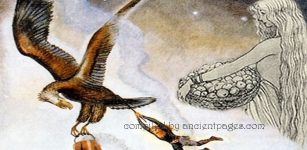 Abduction Of Idun, Goddess-Keeper Of Golden Juvenile Apples In Norse Mythology
Featured Stories | Nov 16, 2019
Abduction Of Idun, Goddess-Keeper Of Golden Juvenile Apples In Norse Mythology
Featured Stories | Nov 16, 2019 -
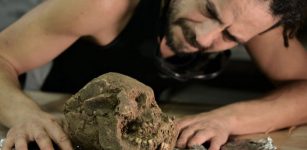 Lady SAS – Ancient Skeleton Of Foreign Woman Found In Palenque – Who Was She?
Archaeology | Apr 11, 2023
Lady SAS – Ancient Skeleton Of Foreign Woman Found In Palenque – Who Was She?
Archaeology | Apr 11, 2023 -
 Ancient Skeletons Reveal Britain Suffered From Parasite Infections Since The Bronze Age
Archaeology | Apr 22, 2022
Ancient Skeletons Reveal Britain Suffered From Parasite Infections Since The Bronze Age
Archaeology | Apr 22, 2022 -
 Scientists Argue Over The Mysterious Void Discovered Inside The Great Pyramid Of Giza
Archaeology | Nov 8, 2017
Scientists Argue Over The Mysterious Void Discovered Inside The Great Pyramid Of Giza
Archaeology | Nov 8, 2017 -
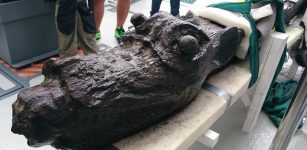 Mystery Of Gribshunden – Danish Royal Sunken Ship Sheds New Light On Psychological Warfare In The Middle Ages
Archaeology | Apr 14, 2017
Mystery Of Gribshunden – Danish Royal Sunken Ship Sheds New Light On Psychological Warfare In The Middle Ages
Archaeology | Apr 14, 2017 -
 Mystery Of Ancient “Magical” Mirrors – Some Of The Strangest Objects In The World
Artifacts | Apr 21, 2011
Mystery Of Ancient “Magical” Mirrors – Some Of The Strangest Objects In The World
Artifacts | Apr 21, 2011 -
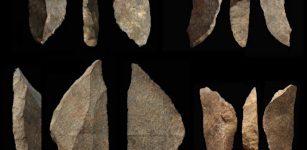 Prehistoric Swiss Army Knife Shows How Early humans Communicated
Archaeology | Jun 9, 2022
Prehistoric Swiss Army Knife Shows How Early humans Communicated
Archaeology | Jun 9, 2022 -
 Artifacts From King Henry VIII’s Warship The Mary Rose – Analyzed
Archaeology | Apr 28, 2020
Artifacts From King Henry VIII’s Warship The Mary Rose – Analyzed
Archaeology | Apr 28, 2020 -
 New Astronomical Knowledge Sheds Light On The Start Of Viking-Age Trade
Archaeology | Dec 22, 2021
New Astronomical Knowledge Sheds Light On The Start Of Viking-Age Trade
Archaeology | Dec 22, 2021 -
 Siberian Neanderthals Were Intrepid Nomads – They Started Their Journey In Eastern Europe
Archaeology | Jan 29, 2020
Siberian Neanderthals Were Intrepid Nomads – They Started Their Journey In Eastern Europe
Archaeology | Jan 29, 2020 -
 Lost Biblical City, Ancient Treasure And Atlantis – Biblical And Archaeological Perspective
Biblical Mysteries | Apr 27, 2018
Lost Biblical City, Ancient Treasure And Atlantis – Biblical And Archaeological Perspective
Biblical Mysteries | Apr 27, 2018 -
 Advanced Heating System Discovered In Ruins Of Metropolis ‘City Of Mother Goddess’
Archaeology | Nov 17, 2019
Advanced Heating System Discovered In Ruins Of Metropolis ‘City Of Mother Goddess’
Archaeology | Nov 17, 2019 -
 On This Day In History: Powerful And Controversial Roman Emperor Frederick II Excommunicated – On Sep 29, 1227
News | Sep 29, 2016
On This Day In History: Powerful And Controversial Roman Emperor Frederick II Excommunicated – On Sep 29, 1227
News | Sep 29, 2016 -
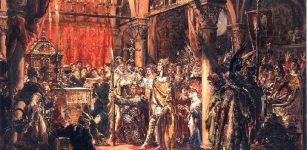 Treasures Of Polish Archaeological Dig In Czermno Medieval Fortified Settlement – Revealed
Archaeology | Dec 5, 2015
Treasures Of Polish Archaeological Dig In Czermno Medieval Fortified Settlement – Revealed
Archaeology | Dec 5, 2015 -
 Rock-Cut Chambers In “House of Muses” Of Zeugma, Home To Numerous Mosaics
Archaeology | Jul 27, 2021
Rock-Cut Chambers In “House of Muses” Of Zeugma, Home To Numerous Mosaics
Archaeology | Jul 27, 2021 -
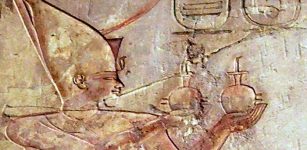 Newly Unearthed Colossal Statue Probably Depicts King Psammetich I And Not Ramses II
Archaeology | Mar 17, 2017
Newly Unearthed Colossal Statue Probably Depicts King Psammetich I And Not Ramses II
Archaeology | Mar 17, 2017 -
 Iron Age Site Tell Deir ‘Alla (“Mound Of The High Monastery”) Flourished 400 Years In Central Jordan Valley
Archaeology | Jul 25, 2022
Iron Age Site Tell Deir ‘Alla (“Mound Of The High Monastery”) Flourished 400 Years In Central Jordan Valley
Archaeology | Jul 25, 2022 -
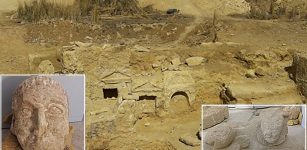 Remains Of Graeco-Roman Temple Discovered Near Egypt’s Siwa Oasis
Archaeology | Apr 6, 2018
Remains Of Graeco-Roman Temple Discovered Near Egypt’s Siwa Oasis
Archaeology | Apr 6, 2018 -
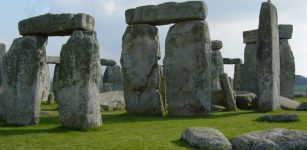 Stonehenge May Have Aligned With The Moon As Well As The Sun
Featured Stories | Jun 4, 2024
Stonehenge May Have Aligned With The Moon As Well As The Sun
Featured Stories | Jun 4, 2024


